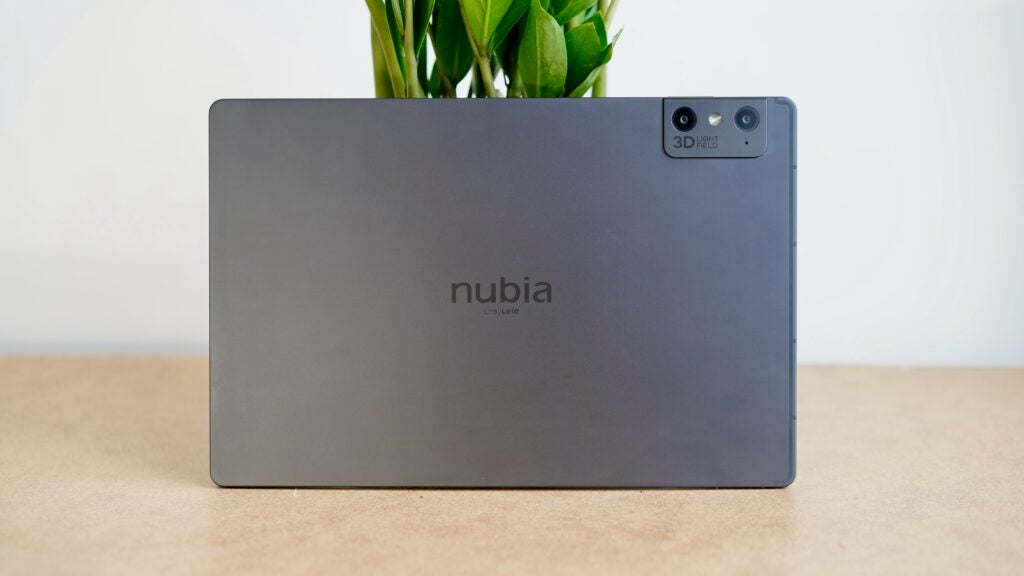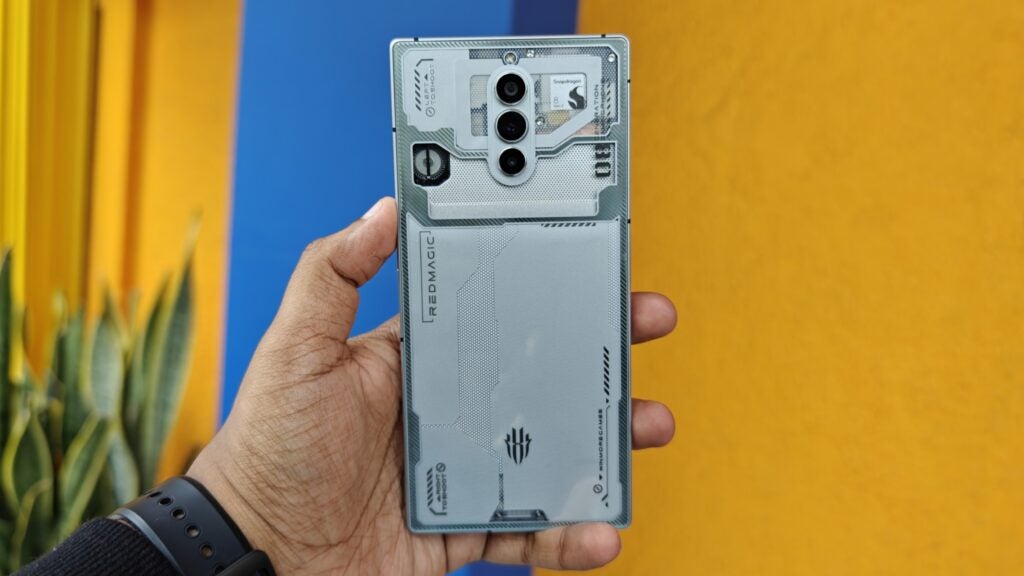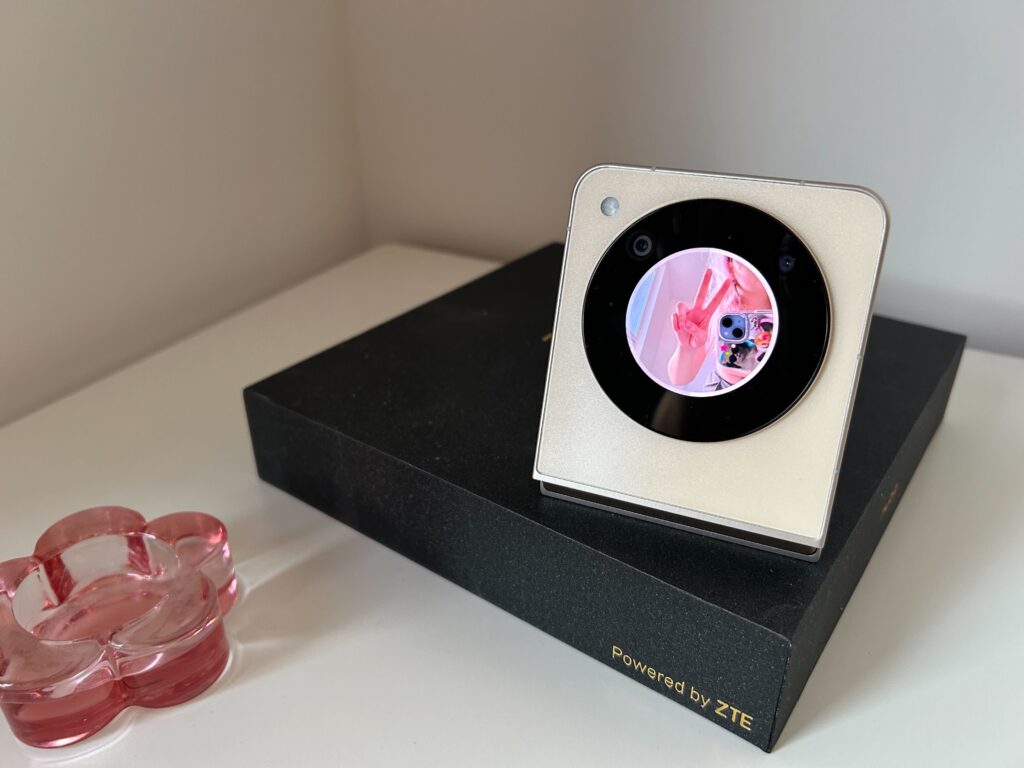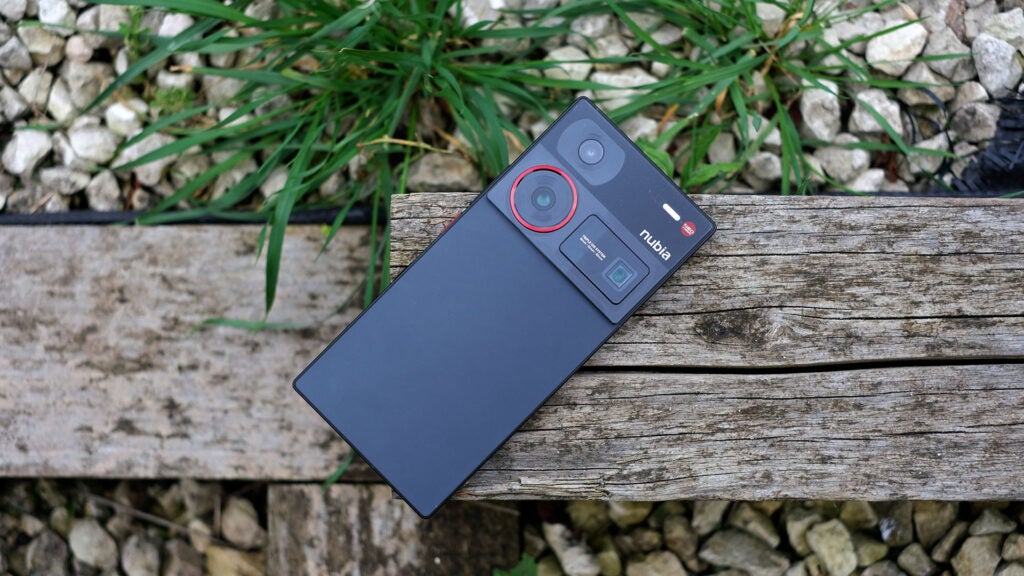
Verdict
The Nubia Pad 3D is a cool proof of concept and that rarest of things: an Android tablet that tries something different. Its glasses-free 3D display works well, as does the dual-camera system used for creating 3D imagery – at least for the most part. However, the tablet itself is extremely unwieldy and somewhat buggy, it’s not specced as well as more traditional alternatives, and we still doubt whether there’s a true call for 3D media content, especially with such scant availability.
Pros
- Unique glasses-free display
- 3D photography intuitively handled
- Decent battery life
Cons
- Very thick and heavy
- Not all 3D content available
- Bugs and limitations make it feel like a prototype
Availability
- UKRRP: £1149
- USARRP: $1199
- EuropeRRP: €1299
- CanadaTBC
- AustraliaTBC
Key Features
- 3D photos and videosThe tablet is able to create the illusion that objects are popping out of the screen for photos and videos.
- Clever AI technologyThe tablet is able to give 2D photos and videos 3D effects thanks to the AI engine.
- Decent battery lifeWith a decent (but not industry-leading) 9,070mAh battery, the Nubia Pad 3D can keep on going.
Introduction
The Nubia Pad 3D is a somewhat experimental full-sized tablet that features a glasses-free 3D display as its headline component.
Is it a worthwhile feature, or should someone tell ZTE and partner Leia that it isn’t 2011 any more? That’s the year in which Nintendo launched its 3DS handheld, which is just about the only mainstream consumer device to have successfully launched with this sort of technology.
Besides the Nubia Pad 3D’s core gimmick, I’ll also be seeking to establish its worth as a stand-alone Android tablet. A weighty task considering the Nubia Pad 3D costs an eye-watering £1,149/$1199, or a slightly cheaper £1049/$1099 during the pre-order phase ahead of its 11 April release.
At that sort of price, the Nubia Pad 3D is keeping company with some serious players in the premium tablet market, including the 12.9-inch iPad Pro and the Samsung Galaxy Tab S8 Ultra. You’d better really want a tablet that can play 3D content, is what I’m saying.
Design and screen
- Premium but thick and heavy
- 12.4-inch 120Hz IPS LCD display
- Glasses-free stereoscopic 3D effect
The Nubia Pad 3D looks like a fairly generic full-sized tablet. Its severe flat surfaces and dark grey metallic rear are redolent of the Lenovo Tab P12 Pro and the Samsung Galaxy Tab S8 Ultra, though the extra-thick forehead housing twin 3D front cameras give the tablet a rather lopsided look.
Around back, the 3D camera module is suitably showy. It doesn’t quite flow out of the side frame, Pixel 7 Pro style, but it is heavily tapered.
Talking of heavy, the Nubia Pad 3D is one chunky monkey. I weighed it at 781g which, together with a thickness of 8.4mm, is rather hefty for a tablet. By comparison, the iPad Pro weighs 682g and is 6.4mm thick, while the Samsung Galaxy Tab S8 Ultra weighs 726g and measures 5.5mm thick. Bear in mind that the Samsung spreads that load out over a much larger surface area too, thanks to its 14.6-inch display.
The point is, I found the Nubia Pad 3D to be flat-out uncomfortable to hold and use for any serious length of time, except for those situations where I could prop it on my lap. Given the need to have the display perfectly aligned for that proper 3D effect, this is a bit of an issue.
Of course, all of that unwieldiness is effectively in service to the Nubia Pad 3D’s core 3D gimmick. Its 12.4-inch 3D lightfield display is capable of displaying 3D content without the need for any silly glasses. Like the Nintendo 3DS, the Nubia Pad 3D achieves this by presenting a different image to each of your eyes, creating the illusion of depth. It tracks your head well, though it’ll degenerate into a blurry mess when you move beyond a certain angle.
Get the right piece of 3D content – preferably fairly static with a clear subject that can stand clear from the background – and the effect can be very cool. I hesitate to call it natural though. You’re never in doubt that this is a neat visual trick, and to that end, the effect is more akin to a pop-up book than some immersive AR experience.
Another side-effect of splitting the content in this way is that the picture becomes noticeably grainier and more pixelated. It still doesn’t look bad, but there’s a lack of smoothness that can detract from the overall experience. Even when viewing 2D content, the screen has a strangely mottled texture, doubtless related to that clever glasses-free 3D technology.
Taken as a regular Android tablet – which is how you’ll probably be using the Nubia Pad 3D much of the time – this is a 12.4-inch IPS LCD with a 120Hz refresh rate, which sounds like a decent if somewhat mid-range spec. The 1600 x 2560 resolution is competitive with the Samsung Galaxy Tab S8 Ultra, but the use of an LCD panel rather than an OLED is not.
It’s a mixed bag on the colour accuracy front, with a colour temperature of 6300K (6500K being optimal) and a Delta E of 2.16 (with close to 1 being ideal). On the other hand, it covers 100% of the sRGB gamut, 82.5% Adobe RGB, and 90.1% DCI P3, which isn’t bad going
The screen doesn’t get massively bright, at 376 nits with auto brightness turned off, but that’s still better than the Samsung Galaxy Tab S8 Ultra. Of course, that latter screen’s OLED display means that its HDR brightness potential is much higher.
3D features and cameras
- Range of 3D-specific apps
- Film store doesn’t seem functional
- Twin 16MP (rear) and 8MP (front) cameras
The Nubia Pad 3D is all about presenting 3D content, but sadly (or happily, depending on your perspective) we’re not in the midst of a 3D boom like we were a decade or so ago. There’s no longer a wealth of 3D content to be had.
Leia’s solution is to provide a suite of pre-installed apps with the sole purpose of supplying a steady stream of 3D media. Unfortunately, one of the main apps here doesn’t actually work. LeiaFlix is supposed to provide a storefront for proper 3D movies, but it doesn’t seem to work outside of the US, and simply redirects you to the Leia Appstore without any explanation.
LeiaTube pulls in suitable 2D videos from online providers such as YouTube and Vimeo, which brings us to one of the Nubia Pad 3D’s key tricks: it can turn 2D content into 3D content in real-time. This is a clever technique that potentially opens out that ostensibly limited 3D library considerably, though in practice it yields mixed results.
The 2D surfing video that was highlighted when I first booted up the LeiaTube app didn’t really work, with no strong fixed point or sense of perspective. Others made my eyes feel squiffy straight away, forcing me to back out within a minute lest I lose my lunch.
Other videos worked pretty well, such as a promotional video for Taiwan, which lent real depth and pop to its largely static footage of lanterns and monuments. Even with these, though, I wouldn’t want to watch anything long-form in this way. It’s just too tiresome on the eyes.
LeiaPlayer supplies a series of pre-shot images that really sells the 3D effect, though quite how much time you’ll want to spend looking at someone else’s shot of a seagull standing on a wall is another matter. LeiaChat lets you render your video chats in 3D, should you really wish to.
LeiaViewer gives you a bunch of random 3D models that you can pan around with a full 3D effect, and also adjust the severity of said 3D effect. ZTE also claims that there are more than 50 3D games ready to go through the Leia Appstore, but all I could find was a pair of demos.
The Nubia Pad 3D’s main 3D party trick, however, is its ability to create 3D content using its twin 16MP rear cameras, in conjunction with some clever Al-powered 3D capture software. I’m impressed by how well this feature works. Take a picture using the default LeiaCam app, and hitting the image preview will instantly (well, with a slight processing pause) offer it in full 3D.
The twin cameras will automatically depth-map everything in view, with a little screen in the corner showing a heat map of how it sees the world. The brighter the object, the closer it is to the camera. It works a bit like focus peaking.
The results occasionally left me flat-out impressed, with items at various points in the scene standing out to various degrees. In certain pictures, the individual leaves on a plant had their own depth profiles. I soon realised that you shouldn’t have anything too close to the camera, however, as it’ll only take on a distractingly unfocused look.
I’d love to tell you about how this tablet performs with 3D selfies using its two front cameras, but the LeiaCam app repeatedly and consistently hung for me whenever I tried to switch over. It lent to a general feeling I had that this is a prototype rather than a fully fleshed-out product.
Besides which, there’s something fundamentally limited about this whole 3D camera endeavour. You can’t share this 3D effect with anyone else unless they have a similar 3D device. That somehow seems unlikely.
Performance
- Older Snapdragon 888 chip
- Decent, bur far from top performance
- Android 12 with ugly custom UI
The Nubia Pad 3D runs on a fairly old flagship chip, the Snapdragon 888. This hasn’t really been a going concern since 2021, but it’s still a capable runner, and is more than up to the task of outputting 3D content.
With that said, there is a notable pause during various 3D processes, such as when converting 2D video content to 3D, so perhaps a more modern flagship chip would have been in order. Perhaps even last year’s Snapdragon 8 Gen 1, which powers the Samsung Galaxy Tab S8 Ultra. It’s likely that this older chip has been used due to that costly 3D technology hogging much of the manufacturing budget.
In terms of benchmark tests, the Nubia Pad 3D attained average Geekbench 6 scores of 1453 single-core and 3635 multi-core. Unfortunately, with this version of the tool being so new, we don’t have a lot of comparative data. However, it does seem to be quite strong, especially in single-core terms.
When it comes to the GPU, the tablet scored 5209 in 3DMark Wildlife and 1491 in Wildlife Extreme, which is a significant drop from the Samsung Galaxy Tab S8 Ultra.
This seasoned Qualcomm chip is backed by 8GB of RAM and 128GB of storage, with a 256GB option also available. There’s also a microSDXC slot for up to 1TB of expansion. Reasonable specs all round.
What with this being a £1,000 (probably) media-focused tablet, you’d hope for decent audio output. Thankfully, you get just that with a set of four stereo speakers and Dolby Atmos support. It’s not going to trouble an iPad Pro of any persuasion for quality, but it’s plenty loud and clear enough.
The tablet runs on Android 12, which still doesn’t work as well in this tablet format as iPadOS. The custom UI that sits on top of it doesn’t really do anything to improve matters either.
Nowhere is this more apparent than when scrolling left from the home screen, which brings up an unoptimised Google Feed that appears to have been lifted straight from a smartphone. In landscape view (which is what this tablet is designed for), that means huge black borders to the left and right.
The UI itself is fundamentally ugly out of the box, too, with a gaudy purple wallpaper and ugly app icons for those aforementioned 3D content apps.
Battery life
- 9,070mAh battery
- 33W charging support
- No charger in the box
Nubia and Leia have equipped their 3D tablet with a 9,070 mAh battery. That’s actually a fair bit smaller than the Samsung Galaxy Tab S8 Ultra’s 11,200 mAh cell and the iPad Pro 12.9 (2022)’s 10,758 mAh cell. Given the heft of the Nubia, that might surprise you.
Despite this, I found that the Nubia Pad 3D lasted pretty well in general usage. An hour of Disney+ streaming sapped 10% of a charge, which is actually a little better than the Tab S8 Ultra managed. Similarly, a 20% drain from an hour of solid gaming (COD Mobile, if you’re wondering) with a Bluetooth controller attached appears to top Samsung’s tablet.
Of course, The Galaxy Tab S8 has a larger, more vibrant display to output to. But it’s still pretty strong.
The tablet only supports 33W wired charging, which isn’t too speedy when you’re talking about such a sizable battery. You only get a USB-C lead in the box, too.
Using a charger from another brand I found that the Nubia Pad 3D would go from 0 to 14% in 15 minutes, and up to 28% after 30 minutes. A full charge took a shade under 2 hours to complete, which is a fair old time.
Should you buy it?
You really want a glasses-free 3D tablet:
The Nubia Pad 3D exists for one purpose – to give you a glasses-free 3D experience in a full-sized tablet form factor. It’s niche alright.
You like your tablets light and wieldy:
The Nubia Pad 3D is one of the thickest and heaviest tablets around.
Final Thoughts
The Nubia Pad 3D has an impressive party trick with those 3D visuals, especially paired with the AI engine that can convert flat 2D images/videos into eye-popping 3D creations. It’s a great gadget to wow friends and family, but I’m not convinced it has much use beyond that, especially with the limited app library and inability to use LeiaFlix! outside of the USA.
Otherwise, the specs are decent enough with the Snapdragon 888 processor and 12.4-inch LCD panel, it’s just hard to justify at such a premium price tag.
How we test
We test every tablet we review thoroughly. We use industry-standard tests to compare features properly and we use the tablet as our main device over the review period. We’ll always tell you what we find and we never, ever, accept money to review a product.
Find out more about how we test in our ethics policy.
Used as a main tablet for the review period
Thorough camera testing in well-lit and low-light conditions
Tested and benchmarked using respected industry tests
You might like…
FAQs
Do you need glasses for the 3D effects?
No, there’s no need for glasses, as the cameras are able to track your head and make sure the 3D image is positioned correctly.
Benchmark results
Geekbench 5 single core
Geekbench 5 multi core
sRGB
Adobe RGB
DCI-P3
Delta Colour accuracy (Delta E)
Max brightness
1 hour video playback (Netflix, HDR)
30 minute gaming (intensive)
30 minute gaming (light)
1 hour music streaming (online)
Time from 0-100% charge
Time from 0-50% charge
3D Mark – Wild Life
Nubia Pad 3D
1453
3635
100 %
82.5 %
90.1 %
2.16
376 nits
10 %
10 %
–
–
–
–
1491
Samsung Galaxy Tab S8 Ultra
1244
3277
97.8 %
72.1 %
74.7 %
–
500 nits
11 %
16 %
10 %
5 %
105 min
75 Min
8855
Full specs
UK RRP
USA RRP
EU RRP
Manufacturer
Screen Size
Storage Capacity
Rear Camera
Front Camera
Video Recording
IP rating
Battery
Fast Charging
Size (Dimensions)
Weight
ASIN
Operating System
Release Date
First Reviewed Date
Resolution
Refresh Rate
Ports
Chipset
RAM
Colours
Nubia Pad 3D
£1149
$1199
€1299
ZTE Corporation
12.4 inches
–
16MP + 16MP
8MP + 8MP
Yes
Not Disclosed
9070 mAh
Yes
285 x 189 x 8.4 MM
780 G
–
Android 12
2023
20/03/2023
2560 x 1600
120 Hz
USB-C
Snapdragon 888
8GB
–
Samsung Galaxy Tab S8 Ultra
£999
–
€1219
Samsung
14.6 inches
128GB
13-megapixels
12-megapixels
Yes
Not Disclosed
11200 mAh
Yes
208.6 x 5.5 x 326.4 MM
726 G
B09LYZ4P9B
Android 12
2022
25/03/2022
2960 x 1848
120 Hz
USB-C
4nm 64-bit octa-core processor
8GB
Graphite
Jargon buster
mAh
An abbreviation for milliampere-hour and a way to express the capacity of batteries, especially smaller ones in phones. In most cases the higher the mAh, the longer the battery will last but this isn’t always the case.
LCD
The type of display usually used on cheaper and mid-range devices. Lacks the punch on an OLED panel.



